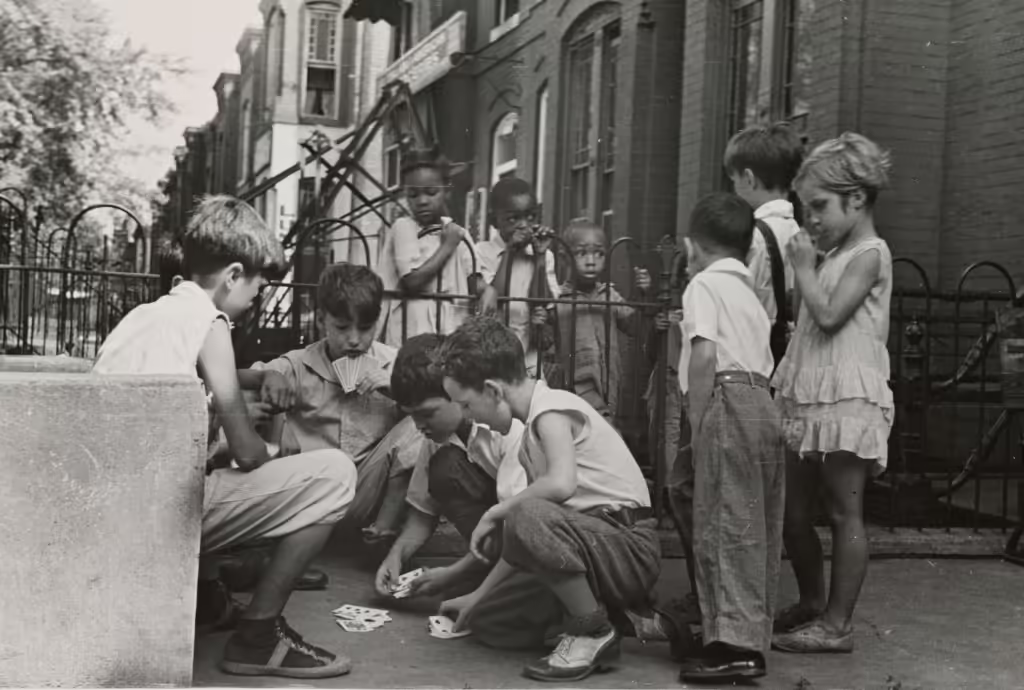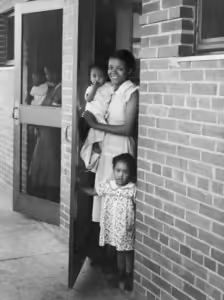
Adoption has existed in human society for thousands of years. It has changed a lot over time. Adoption has always aimed to care for and give a family to children. This spans from ancient civilizations’ practices to modern-day methods. This article explores historical adoption practices. It looks at how different cultures and eras have shaped adoption.
Key Takeaways About Historical Adoption Practices
- Adoption has existed since ancient times. Historical records show it in ancient Rome, Greece, and Egypt.
- The 1851 Massachusetts Adoption Act was a key moment in U.S. adoption history. It set the first legal guidelines for adoption.
- The 20th century saw big changes in adoption. There was a rise in international adoptions and shifts in society’s attitudes.
- Modern adoption practices include open and closed adoptions. They vary in the contact between biological and adoptive families.
- Cultural views on adoption are changing. They affect laws, practices, and the experiences of adoptees and families.
Adoption in Ancient Civilizations
Roman Empire’s Historical Adoption Practices
In ancient Rome, adoption was a legal process. It transferred paternal power (potestas) to ensure succession in male lines. This practice was crucial for maintaining family lineage and political stability. Unlike modern adoption, it was more about the adopter’s interests. It often involved adults rather than children. Foundlings, or abandoned children, were sometimes taken in by families. But they were not typically adopted under Roman law.
Adoption in Ancient Greece
In ancient Greece, adoption was a legal process. It aimed to ensure the family line, especially for those without male heirs. The adopted person, usually an adult, would assume the rights and duties of a biological son. This practice helped preserve family wealth and religious duties. Adoption was less about the welfare of the child and more about the needs of the family.
Adoption in Ancient Egypt
Adoption in ancient Egypt was less formalized compared to Rome and Greece. It was often used to ensure that religious and cultural practices continued. For instance, priests would adopt sons to perform necessary rituals. There are fewer records of formal adoption laws. Still, the practice was important in maintaining societal and religious structures.
Adoption in Early America
Colonial Period Adoption Practices
In the early days of America, adoption wasn’t formalized like it is today. Families often took in children informally, usually for economic reasons. Farm families, for example, needed extra hands to help with chores. These informal arrangements were common. There were no official records or legal processes for adoption.
Impact of Industrialization
The Industrial Revolution brought massive changes to American society. Many families moved to cities for work, but not all could support their children. This led to a rise in informal adoptions and the creation of orphanages. Overcrowding in orphanages was a major issue. It led to movements like the Orphan Train. It relocated children from cities to rural areas.
The Role of Orphanages in Historical Adoption Practices
Orphanages played a crucial role in early American historical adoption practices. They provided a temporary home for children whose families couldn’t care for them. Yet, conditions were often harsh. Many children were placed in homes where they were expected to work. The focus shifted from using child labor to ensuring their well-being. This led to the development of formal adoption laws.
Massachusetts pioneered modern adoption legislation in 1851, setting a precedent for the nation. Lawmakers passed groundbreaking child welfare legislation called the Adoption of Children Act.
Historical Adoption practices in early America were a mix of necessity and compassion. They evolved significantly over time.
The 1851 Massachusetts Adoption Act
Origins of the Act
Hey there! Let’s dive into the origins of the 1851 Massachusetts Adoption Act. Before this act, adoption wasn’t legally recognized in the United States. Families often sent their kids to others for education or labor. But there was no legal separation from their biological families. This act was a game-changer. It was the first to give adoption a formal legal framework. It was driven by the need to have a formal process for adoptions as the number of informal adoptions rose.
Key Provisions
The 1851 Massachusetts Adoption Act had key provisions. They set the stage for modern adoption practices. Here are the main points:
- Judicial Approval: The court carefully weighed the child’s welfare before granting adoption approval. A judge’s scrutiny validated that the decision helped the young one. It safeguarded the process.
- Parental Consent: The child’s parent or guardian had to consent to the adoption.
- Suitability of Adoptive Family: The prospective adoptive family had to prove they could raise the child.
While the act aimed to protect the child’s interests, it often failed in practice. For example, early adoption statutes rarely set rules on consents. There were no safeguards to ensure that consent was informed and voluntary.
Impact on Modern Adoption
In 1851, Massachusetts broke new ground. It passed the first adoption law. It shaped the future of child welfare. This act set a precedent. It influenced adoption practices nationwide for generations. It introduced the idea that adoptions should be “fit and proper,” a concept that has evolved over time. This act set the stage for future adoption laws. It required investigations and recommendations by state welfare departments. This is seen in Minnesota’s 1917 adoption law.
The 1851 Massachusetts Adoption Act marked a turning point. It began the modern era of adoption. It made adoptions more than informal agreements. It provided a legal framework to protect the child’s interests.
So, there you have it! The 1851 Massachusetts Adoption Act was key in adoption history. It set the stage for today’s more protective adoption processes.
Adoption in the 20th Century

The Baby Scoop Era
Adoption rates soared between 1945 and 1974. The post-war era, dubbed the Baby Scoop, saw a huge rise in child placements as social norms shifted. After World War II, there was a big increase in births outside of marriage. At the same time, scientists started to say that nurture was more important than genetics. This made adoption popular with single parents and couples who couldn’t have kids. Adoption became a way to build families and was seen as a good thing for the child. During this time, the idea of keeping adoption records secret also started. This was to stop birth parents from taking back their children.
Rise of International Adoption
In the mid-20th century, international adoption started to become more common. Wars and conflicts left many children orphaned. People in the U.S. and other countries began to adopt them. This was especially true after the Korean War. International adoption was seen as a way to give these kids a better life. It also showed how historical adoption practices were changing and becoming more global.
Adoption and the Civil Rights Movement
The 1960s and 1970s Civil Rights Movement affected adoption practices. Some began to question the idea that children should be adopted only by families of the same race. This led to more transracial adoptions. Now, children were adopted by families of a different race. It was a time of big changes and showed that adoption practices were evolving to be more inclusive.
Adoption practices changed a lot in the 20th century. Each new movement was labeled, in some way, as reform. The 20th century saw big changes in adoption. It began with the Baby Scoop Era and included international and transracial adoptions.
Modern Adoption Practices

Open vs. Closed Adoption
Adoption today can be either open or closed. In an open adoption, the adoptive and biological parents know each other. They may interact. This can be an informal arrangement or a legal agreement, depending on the state. A closed adoption keeps all identifying information secret. But non-identifying details, like medical history, can still be shared. Some states have “safe haven” laws. They allow infants to be left anonymously at designated places. This has sparked some debate.
Legal and Ethical Considerations
Adoption laws and ethics have evolved significantly. Prioritize children’s welfare while upholding universal rights. This approach ensures fairness and protects society’s most vulnerable members. Legal frameworks vary by state, making it essential to understand local laws. Ethical issues include the transparency of the adoption process. They also include the rights of birth parents and adoptees.
The Role of Technology in Adoption
Technology has revolutionized adoption. Online platforms and genealogy services help connect adoptive parents with their children. They also provide resources to trace biological roots. Social media and niche sites provide support and information. They make adoption easier and more informed.
Adoption practices have improved. They now embrace openness, legal safeguards, and technology to create loving families.
Cultural Perspectives on Adoption
Adoption is a fascinating topic because it varies so much across different cultures. Let’s dive into some of these perspectives and see how they shape the adoption experience.
Adoption Reforms and Future Trends
Legislative Changes
Over the years, adoption laws have seen significant changes. These reforms aim to make the process fairer and more transparent for all. Many states now require a thorough home study before approving an adoption. This ensures that the adoptive home is safe and suitable for the child. A key change has been the shift to open adoptions. Birth parents and adoptive families can maintain limited connections through open adoption arrangements.
Advocacy and Support Groups
Adoption circles thrive on advocacy networks and support systems. These vital groups connect, educate, and empower families navigating complex journeys. Through shared experiences, they foster understanding and drive positive change. Adoptive families and birth parents can access counseling and support through their services. They also provide a sense of belonging. These groups work tirelessly to push for better laws and practices. Some even give valuable tips for adoptees to find their biological families.
Future Directions in Adoption Policy
Looking ahead, the future of adoption policy seems promising. There is a growing focus on the child’s best interests. We must place them in loving, supportive homes. Technology is playing a bigger role. It is helping to match children with adoptive families. As society becomes more accepting of diverse family structures, we can expect to see even more positive changes in adoption practices.
Conclusion
Adoption practices have come a long way from the early days of informal arrangements and legal uncertainties. Today, they show our changing views on family and children’s best interests. Adoption, from Massachusetts’s first modern law to today’s diverse practices, shows society’s changes. It reflects our enduring desire to love and care for needy children. Adoption, whether open or closed, domestic or international, is a journey. It is shaped by, and shapes, the world around us. It’s a story of compassion, legal change, and the bonds that form when a child finds a forever home. Hire Ancestry Expert.
Frequently Asked Questions About Historical Adoption Practices
What is the history of adoption in ancient civilizations?
In ancient Rome, Greece, and Egypt, adoption was common. It ensured a family line and secured political alliances. Roman emperors, for example, were sometimes adopted to maintain a stable succession.
How did adoption practices change in early America?
In early America, adoption was informal. It was usually for practical reasons, like labor or education. Only after the 1851 Massachusetts Adoption Act were laws for adoption established.
What was the significance of the 1851 Massachusetts Adoption Act?
The 1851 Massachusetts Adoption Act was the first modern adoption law in the U.S. It aimed to ensure that adoptions served the child’s best interests. This marked the start of the modern era of adoption.
What were some key trends in adoption during the 20th century?
The 20th century saw a rise in international adoptions. It was the Baby Scoop Era, where many unwed mothers gave up their babies for adoption. Adoption also became more visible in popular culture and media.
How do modern adoption practices differ from historical adoption practices?
Modern adoption practices include open and closed adoptions. There are laws to protect all parties. Technology is also important. It offers new ways for adoptive families and birth parents to connect.
What are some cultural perspectives on adoption?
Cultural views on adoption vary widely. Some cultures celebrate and discuss adoption. Others keep it private. Transracial and transnational adoptions have also brought new discussions about identity and belonging.


